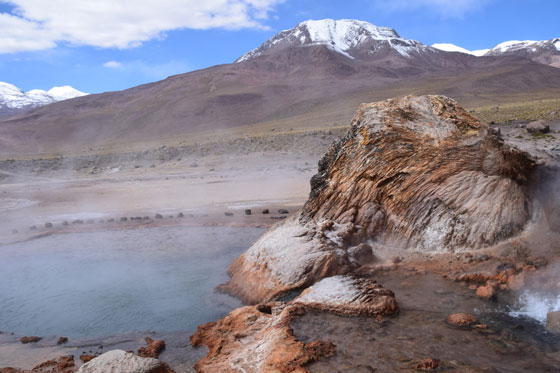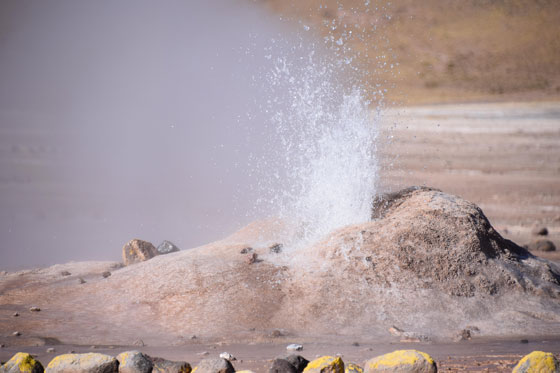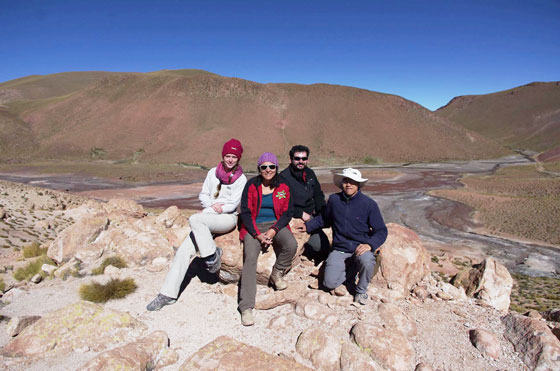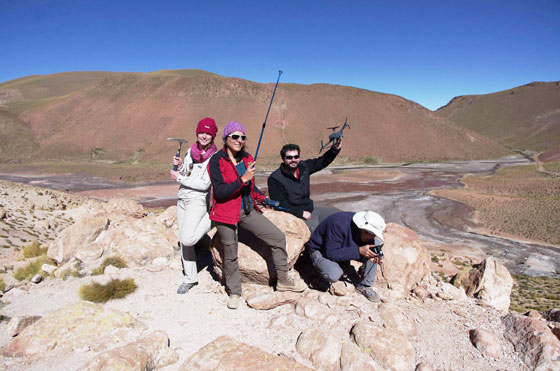Hot geysers in the Andes may be similar to deposits on Mars.
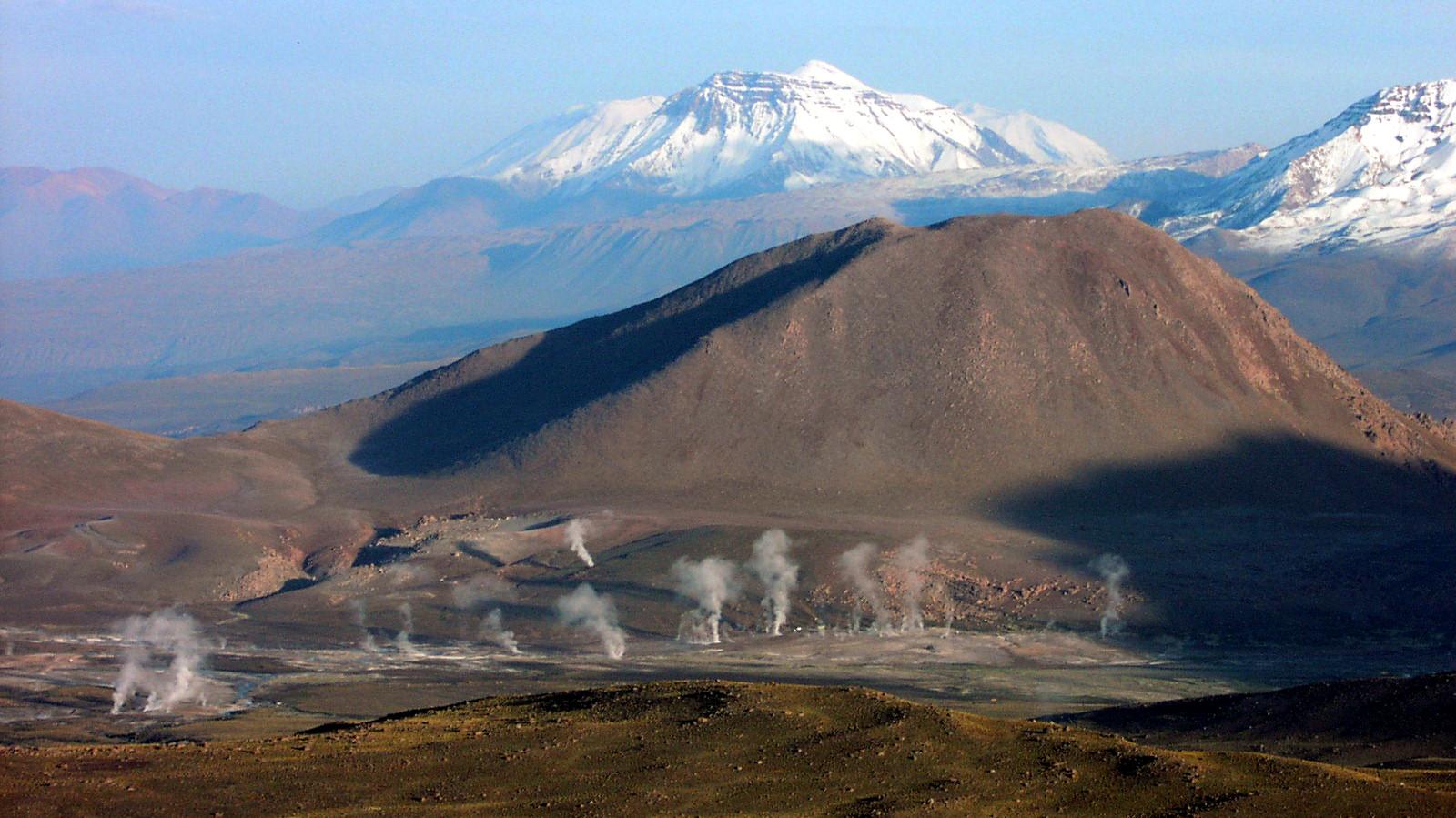
El Tatio is a geyser field in the Andes in Chile. At more than 14,000 feet above sea level, El Tatio is among the highest and driest geyser systems in the world, making it frequent location for Mars analog research – that is, research here on Earth in environments that may be similar what the environment on Mars may be, or may have once been.
SETI Institute scientist J.R. Skok was invited to join an international expedition to the El Tatio Geyser system led researchers at the University of Chile. J.R. went along to help tie these geysers to hot spring deposits on Mars that are at the center of the search for life. Hot spring deposits have four properties needed to detect whether life exists (or existed): They are places that life may be able to form; they are places in which life can thrive; they produce sinters which preserve evidence well; and they are compositionally distinct, allowing us to find them from orbit.
To prepare to sample and explore these deposits, J.R. has been exploring hot spring and geyser systems throughout the world. El Tatio’s elevation and dry climate make the hydrological cycles dominated by evaporation instead of rain, and create deposits that closely resemble that of Mars. We are exploring these deposits to understand what they mean for habitats and preservation here on Earth and what they might mean for exploring similar deposits on Mars. This work will help SETI Institute scientists lead the search for life on Mars.
